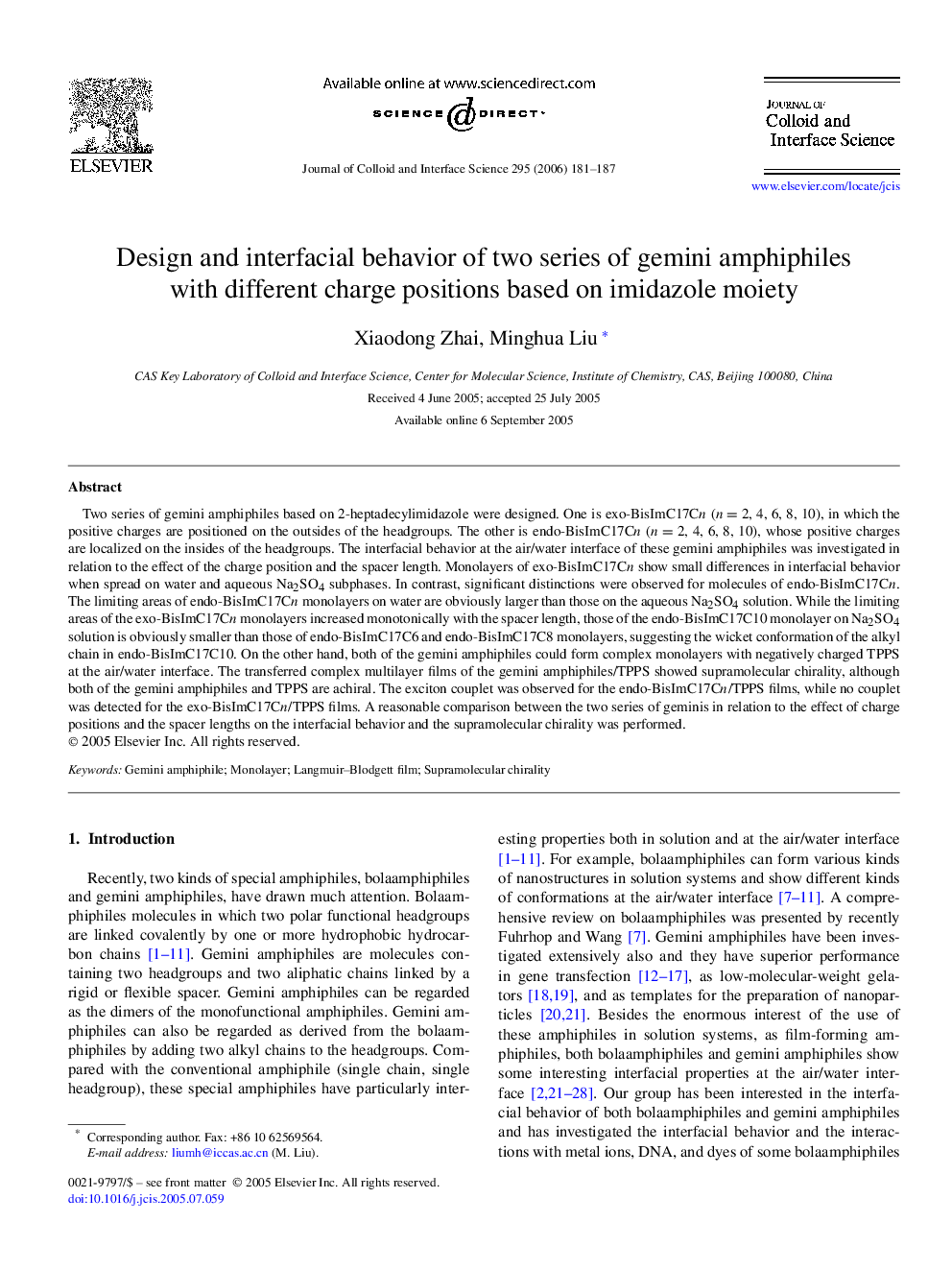| Article ID | Journal | Published Year | Pages | File Type |
|---|---|---|---|---|
| 613873 | Journal of Colloid and Interface Science | 2006 | 7 Pages |
Two series of gemini amphiphiles based on 2-heptadecylimidazole were designed. One is exo-BisImC17Cn (n=2n=2, 4, 6, 8, 10), in which the positive charges are positioned on the outsides of the headgroups. The other is endo-BisImC17Cn (n=2n=2, 4, 6, 8, 10), whose positive charges are localized on the insides of the headgroups. The interfacial behavior at the air/water interface of these gemini amphiphiles was investigated in relation to the effect of the charge position and the spacer length. Monolayers of exo-BisImC17Cn show small differences in interfacial behavior when spread on water and aqueous Na2SO4 subphases. In contrast, significant distinctions were observed for molecules of endo-BisImC17Cn. The limiting areas of endo-BisImC17Cn monolayers on water are obviously larger than those on the aqueous Na2SO4 solution. While the limiting areas of the exo-BisImC17Cn monolayers increased monotonically with the spacer length, those of the endo-BisImC17C10 monolayer on Na2SO4 solution is obviously smaller than those of endo-BisImC17C6 and endo-BisImC17C8 monolayers, suggesting the wicket conformation of the alkyl chain in endo-BisImC17C10. On the other hand, both of the gemini amphiphiles could form complex monolayers with negatively charged TPPS at the air/water interface. The transferred complex multilayer films of the gemini amphiphiles/TPPS showed supramolecular chirality, although both of the gemini amphiphiles and TPPS are achiral. The exciton couplet was observed for the endo-BisImC17Cn/TPPS films, while no couplet was detected for the exo-BisImC17Cn/TPPS films. A reasonable comparison between the two series of geminis in relation to the effect of charge positions and the spacer lengths on the interfacial behavior and the supramolecular chirality was performed.
Graphical abstractTwo series of gemini amphiphiles with positive charges localized in the exo and endo positions were designed and obvious different interfacial behaviors were found.Figure optionsDownload full-size imageDownload as PowerPoint slide
